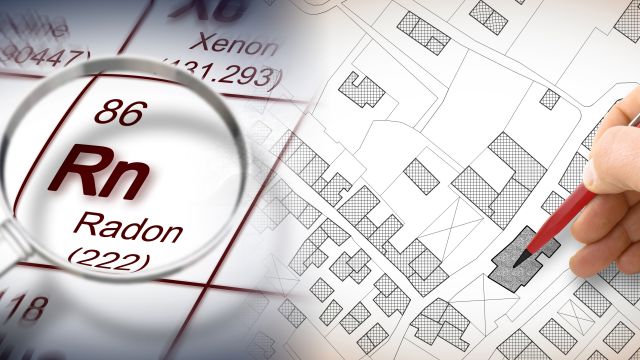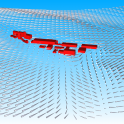
Radon dispersion in buildings
Reference values for radon concentration at the workplace
In order to draw attention to the hazards of radon and to initiate appropriate preventive regulations, the Federal Environment Ministry, with participation of the Länder, has for the first time drawn up a "Radon action plan for the sustainable reduction of radon exposure". This plan is based on the Radiation Protection Act (StrlSchG); its objective is to protect people in Germany from excessive radon exposure. Among other things, a reference value for the annual averaged radon-222 activity concentration in the air was established for recreation rooms (Section 124 StrlSchG); this reference value is 300 Becquerel per cubic metre and also applies to workplaces (Section 126 StrlSchG).
At workplaces located in so-called radon priority areas - i.e. areas where a considerable number of buildings exceed the reference values - as well as at workplaces where high radon concentrations are expected (e.g. mines or plants for the treatment and supply of drinking water), mandatory measurements are carried out. This is to ensure that the reference value is not exceeded or that appropriate measures are taken if necessary to reduce the radon concentration. The measurements must be initiated by anyone "responsible for an indoor workplace" (Section 127 StrlSchG).
In this context, GRS scientists investigated in a research project funded by the Federal Ministry for the Environment how radon at the workplace can be measured and how its dispersion in buildings can be modelled. For this purpose, the simulation software COCOSYS (Containment Code System) developed at GRS was applied. It is usually used for performing extensive simulations of event and accident sequences in containments of light water reactors. In such investigations, COCOSYS also serves to analyse the dispersion of radioactive materials, aerosols or gases in the containment of a nuclear power plant.
Realistic modelling of radon dispersion with the help of COCOSYS
The aim of the research project was to further develop the capabilities and possibilities of COCOSYS in order to be able to model the radon dispersion in buildings housing workplaces and thus to provide a realistic picture. In a first step, the GRS team developed a generic mathematical model to describe how the concentration of radon in indoor air increases. In the formula for calculating the radon concentration, the essential influencing factors of radon source term and air exchange rate are also taken into account. In simple terms, these factors describe on the one hand how much radon penetrates into the building from underground and on the other hand the ventilation of a room (or the air exchange rate due to leaks) and its influence on the reduction of the radon concentration.
Then, COCOSYS was used to recalculate measured data obtained from the literature on radon concentration in single-family houses. The comparison of the results from the generic mathematical model with those from the recalculations with COCOSYS enabled the experts to make necessary code adjustments and extensions in COCOSYS. Subsequently, the radon concentrations and other relevant parameters (e.g. temperature, air pressure and time) were measured on several days in two single-family houses and in a waterworks. It was important in this context to ensure exact metrological recording and the detailed documentation of the factors influencing the measuring results, such as the opening of doors and windows, or movements of the occupants.
The measured data obtained in this way served on the one hand as a basis for a simulation of radon dispersion with COCOSYS and on the other hand for the comparison of the measured values with the calculated values. The good agreement of the simulation results with the measurements shows that COCOSYS is suitable for the calculation of indoor radon dispersion.
About radon
The chemical element radon is, apart from the artificially produced oganesson, the heaviest and at the same time the only radioactive noble gas. It is produced as a result of the radioactive decay of uranium and thorium, traces of which are present in many rocks and in soil. In some regions of Germany, such as the Black Forest, the Bavarian Forest, the Fichtelgebirge or the Erzgebirge, the uranium and thorium content in the soil is comparatively high. Therefore, radon occurs there more often in the air at ground level. Its share of the natural radiation on earth is by far the highest: In Germany, the average natural radiation exposure for an individual is about 2.1 millisieverts per year - a good half of which is due to radon.
Radon can become a health hazard if it accumulates in rooms with insufficient ventilation. As the noble gas from the ground penetrates into buildings through pores, cracks and crevices, basements and ground floors are particularly affected. If the odourless, tasteless and colourless gas is inhaled in large quantities, the ionising alpha radiation it emits can cause damage to the body. Radon is considered the second-most-common cause of lung cancer in Germany after tobacco smoking.
Project highlights Radiation Protection

GRS has developed the atmospheric dispersion code ARTM on behalf of the Federal Ministry for the Environment and the Federal Office for Radiation Protection. ARTM simulates the dispersion of airborne radioactive substances and their deposition on the ground.